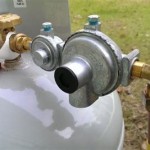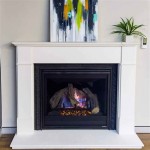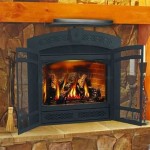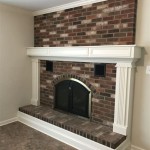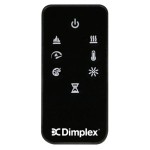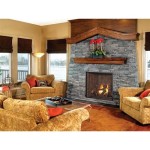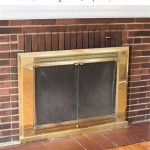Wall Fireplace Ideas: A Comprehensive Guide
Wall fireplaces have emerged as a popular design element in modern homes, offering both aesthetic appeal and functional warmth. Unlike traditional fireplaces, wall fireplaces are typically mounted directly onto a wall, often without the need for extensive structural modifications. This adaptability, coupled with a wide array of styles and fuel options, makes them a versatile choice for various architectural designs and personal preferences. This article explores different types of wall fireplaces, offering ideas and considerations to aid in selecting the best option for your space.
Types of Wall Fireplaces
The market offers a diverse range of wall fireplaces, each distinguished by its fuel source, design, and installation requirements. Understanding these differences is crucial for making an informed decision that aligns with personal needs and budget constraints.
Electric Fireplaces: Electric fireplaces are arguably the most convenient and accessible option for wall mounting. They operate by converting electrical energy into heat through a heating element and often incorporate realistic flame effects using LED technology. Electric fireplaces require minimal installation, typically involving simple mounting to the wall and plugging into a standard electrical outlet. They offer adjustable heat settings and the option to operate the flame effect independently of the heat, allowing for ambiance without warmth during warmer months. Electric fireplaces are available in various sizes and designs, from sleek, modern units to more traditional styles with simulated logs. The cost-effectiveness of electric fireplaces makes them an attractive choice for many homeowners.
Gas Fireplaces: Gas fireplaces provide a more authentic flame experience and are fueled by either natural gas or propane. Installation typically requires a gas line connection, which may necessitate professional plumbing services. Gas fireplaces can provide significant heat output, making them suitable for primary heating in smaller spaces. They often feature realistic ceramic logs and adjustable flame settings. Gas fireplaces offer a blend of convenience and aesthetic appeal with options for both vented and ventless systems. Vented gas fireplaces require a chimney or flue for exhaust, while ventless models burn cleaner and do not require venting, but may have limitations regarding room size and ventilation requirements.
Ethanol Fireplaces: Ethanol fireplaces, also known as bio-ethanol fireplaces, utilize liquid ethanol as fuel. They produce real flames and do not require a chimney or flue, making them an excellent option for homes without existing fireplace infrastructure. Ethanol fireplaces are relatively easy to install, typically involving wall mounting. They burn cleanly, producing minimal smoke or ash. However, the heat output from ethanol fireplaces is generally lower compared to gas or electric options. Ethanol fireplaces are available in a variety of stylish designs and are often chosen for their aesthetic appeal and ease of use. The cost of ethanol fuel can be higher than gas or electricity, which is a factor to consider.
Gel Fireplaces: Gel fireplaces use gel fuel canisters to produce a real flame. Similar to ethanol fireplaces, they do not require a chimney or flue and are simple to install. Gel fireplaces offer a more traditional fireplace aesthetic compared to other ventless options. However, gel fuel canisters can be relatively expensive, and the heat output is typically limited. The flames produced by gel fuel can sometimes be less realistic than those of gas or ethanol fireplaces. Gel fireplaces are often chosen for their portability and ease of use.
Design and Style Considerations
Selecting a wall fireplace involves considering style and integrating it seamlessly into the existing décor. Wall fireplaces can serve as a focal point in a room, enhancing its aesthetic appeal.
Modern and Minimalist: Modern and minimalist designs often feature sleek, clean lines and a focus on simplicity. Wall fireplaces in this style are frequently rectangular or linear in shape, with a frameless or minimal frame design. Materials like stainless steel, black glass, and concrete are common choices. These fireplaces integrate seamlessly into modern interiors, adding a touch of sophistication without overwhelming the space. The minimalist design emphasizes the flames themselves, creating a dynamic visual element.
Traditional and Rustic: Traditional and rustic styles evoke a sense of warmth and coziness. Wall fireplaces in this category often feature stone or brick surrounds, mimicking the look of a classic fireplace. Wood mantels or decorative elements can further enhance the traditional aesthetic. These fireplaces create a focal point with a timeless appeal. Incorporating details like faux logs or textured finishes reinforces the rustic charm. The traditional style integrates the familiarity of a classic fireplace into a streamlined wall-mounted design.
Contemporary and Eclectic: Contemporary and eclectic styles offer a blend of modern and traditional elements, allowing for greater flexibility in design. Wall fireplaces in this category may feature unique shapes, unusual materials, or bold colors. They can serve as a statement piece, adding personality and visual interest to the room. Incorporating artwork or accessories that complement the fireplace design enhances the overall aesthetic. The contemporary style allows for individual expression while maintaining a sense of cohesion within the space.
Frameless and Built-in: Frameless wall fireplaces offer a streamlined, minimalist look. They are often installed flush with the wall surface, creating a seamless integration with the surrounding architecture. This design choice emphasizes the flames and minimizes visual clutter. Built-in wall fireplaces are typically recessed into a wall cavity, providing a clean and sophisticated appearance. These installations require careful planning to ensure proper ventilation and structural support. Frameless and built-in fireplaces are ideal for modern homes with a focus on simplicity and elegance.
Installation and Safety Guidelines
Proper installation is crucial for the safe and efficient operation of a wall fireplace. Adhering to the manufacturer's instructions and local building codes is essential.
Electrical Considerations: For electric fireplaces, ensure the electrical circuit can handle the fireplace's power requirements. Avoid overloading circuits to prevent fire hazards. Consider using a dedicated circuit for the fireplace to ensure optimal performance and safety. Consult a qualified electrician for any electrical work required during installation. Properly ground the fireplace to prevent electrical shock hazards. Regularly inspect the power cord and connections for any signs of damage.
Gas Line Connections: For gas fireplaces, a qualified plumber or gas technician must handle the gas line connection. Ensure the gas line is properly sized and installed according to local codes. Regularly inspect the gas line for leaks or damage. Install a carbon monoxide detector in the vicinity of the fireplace. Never attempt to repair or modify the gas line yourself. Ensure proper ventilation to prevent the buildup of carbon monoxide. Follow the manufacturer's instructions for lighting and operating the fireplace.
Clearances and Ventilation: Maintain adequate clearances around the fireplace to prevent fire hazards. Follow the manufacturer's recommendations for minimum clearances from combustible materials. Ensure proper ventilation to prevent the buildup of smoke or fumes, especially for gas and ethanol fireplaces. Never obstruct the ventilation inlets or outlets of the fireplace. Install smoke detectors in the vicinity of the fireplace. Regularly inspect the chimney or flue (if applicable) for obstructions or damage.
Fire Safety Measures: Keep flammable materials away from the fireplace. Never leave a lit fireplace unattended. Ensure the fireplace is properly maintained and cleaned regularly. Install a fire extinguisher in a readily accessible location. Familiarize yourself with fire safety procedures. Educate all household members about fire safety. Regularly inspect the fireplace for any signs of damage or malfunction. Immediately address any issues to prevent potential hazards. By adhering to these safety guidelines, users can safely enjoy the aesthetic and functional benefits of a wall fireplace. Proper installation and regular maintenance are crucial for ensuring the long-term safety and performance of the fireplace.
The versatility of wall fireplaces makes them a fitting addition to a variety of living spaces, catering to different aesthetic preferences and functional needs. By carefully considering the various types, styles, and installation guidelines, one can effectively integrate a wall fireplace into their home, creating a warm and inviting atmosphere.

Fireplace Ideas Stone Creek Furniture

21 Fireplace Upgrades For Any Room Small Living Decor Feature Wall With

40 Fabulous Fireplace Design Ideas For Any Budget Or Style

Fireplace Wall Designs Photos Ideas Houzz

10 Decorating Ideas For Wall Mounted Fireplace Make Your Space Unique

Design Dilemmas How To A Great Room Fireplace Wall With Built Ins And Television Interior Designer Des Moines Jillian Lare

Fireplace Ideas Stone Creek Furniture

Electric Fireplace Gallery Touchstone Home S Inc

13 Stunning Fireplace Accent Wall Ideas For Your Home Carla Bast Design

Natural Stacked Stone Veneer Fireplace Ideas
Related Posts

